We’ve added another 40-50 feet to the hiking trail. Lots of rocks and tree roots in this stretch so it was slow going.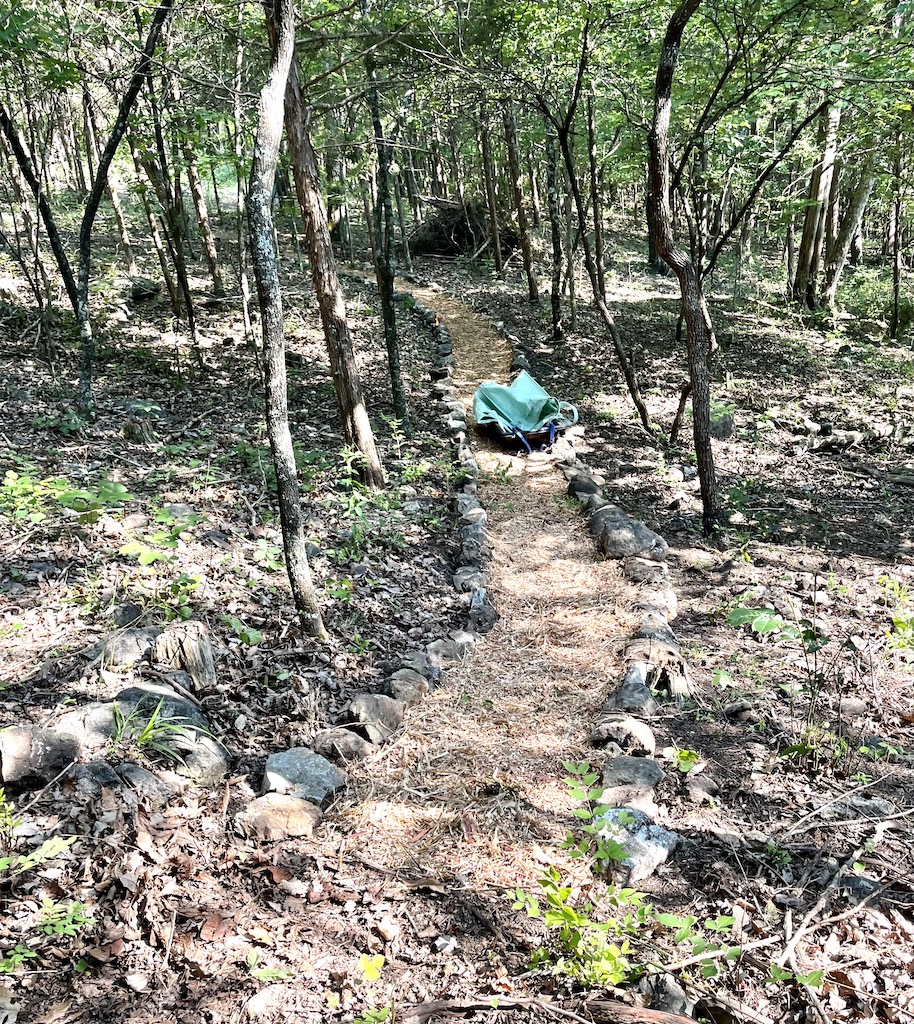
The illustration below is a rough approximation of the trails path. I’m as far down the hill as I can comfortably go so we’ll be heading back up the hill (toward the road).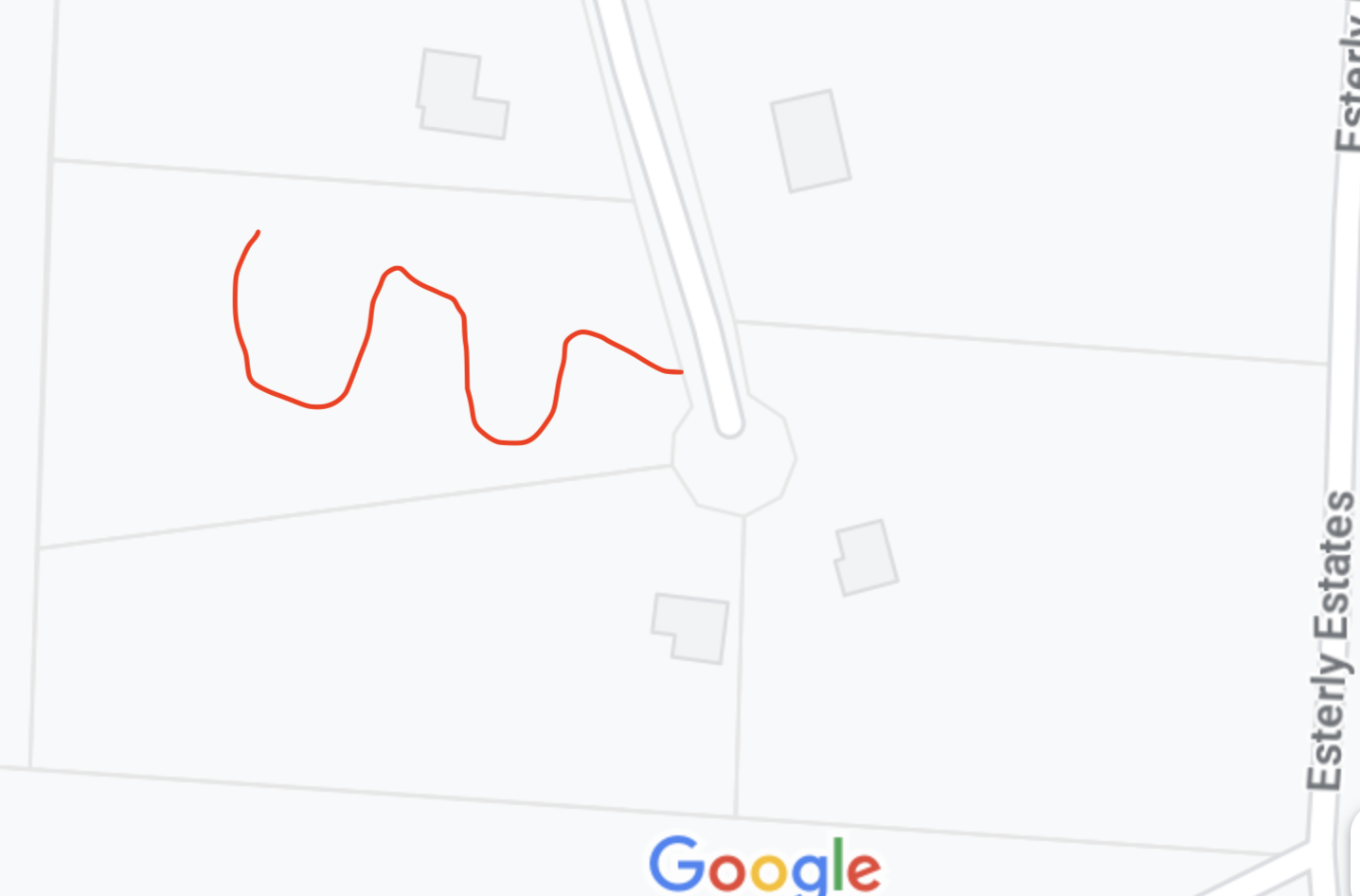
Tag Archives: hiking trail
Hiking trail update 5.9.23
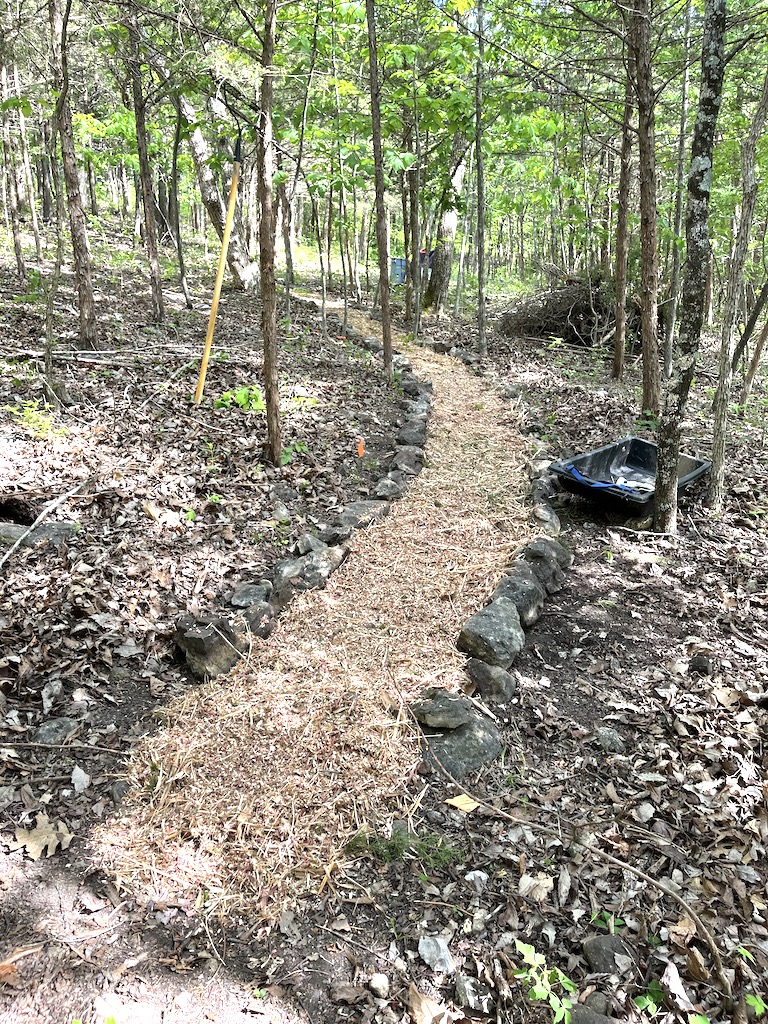
We added another 40 or 50 feet to the hiking trail today. I remind myself (and others) that this project (?) is more about clearing cedar trees than creating a trail. Cedar trees are the crabgrass of the woods. They choke out almost all other trees. I quickly discovered I enjoyed cutting them with my trusty chainsaw, but getting rid of them hard work. As noted in previous posts, the wood chipper changed that. But I quickly generated big piles of wood chips and that was when the idea of making a hiking trail “paved” with cedar chips came to me.
My routine goes something like this:
- Use marking paint to flag the trees to cut
- Fire up (battery powered) the chainsaw and cut the marked trees
- Drag the trees/brush to a pile near the wood chipper
- Fire up the chipper
- Line the hiking trail with rocks to keep the chips from washing away. Works better than you’d think.
- Drag the chips to the end of the trail, dump and rake.
The rocks part is the most physically demanding. There’s no shortage of rocks on our property but there’s no easy way to get them to the trail. It usually comes down to picking them up one at a time and carrying them to the end of the trail.
I find all of this satisfying in a way I can’t describe. Mindless, physical activity out in the woods with no clear plan for where the trail leads.
The sweet sound of the chainsaw
After cutting –the fun part– everything has to be dragged to a pile near the chipper. Less fun.
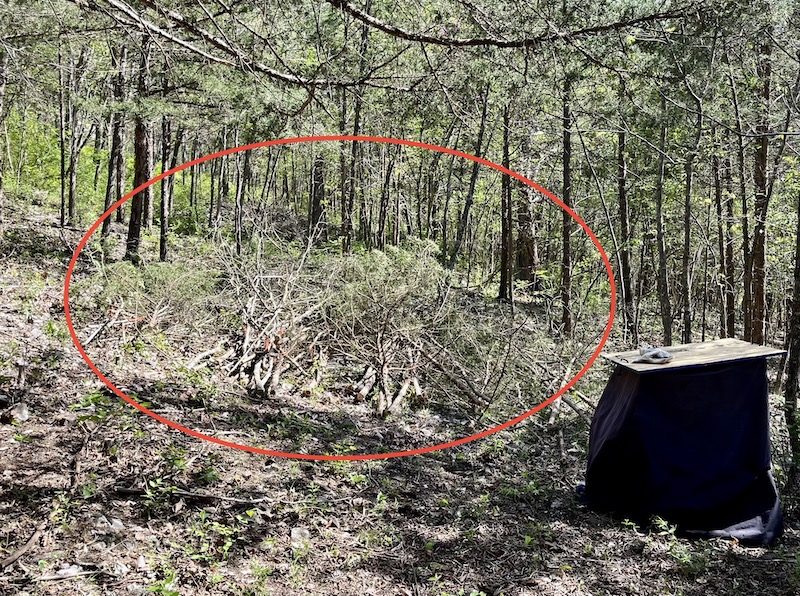
Final step before chipping is clipping the limbs to get the trunk < 3 inches.
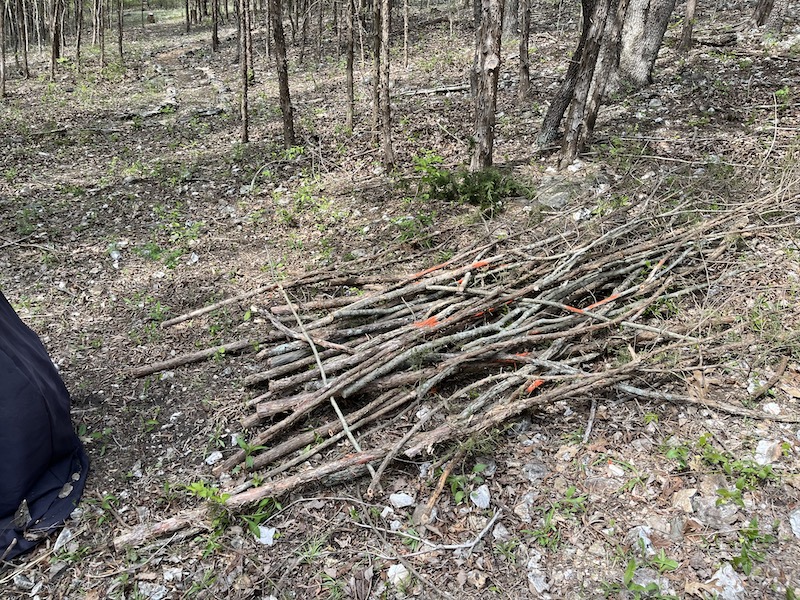
After an hour of chipping I had enough chips to extend the trail 30 or 40 feet.
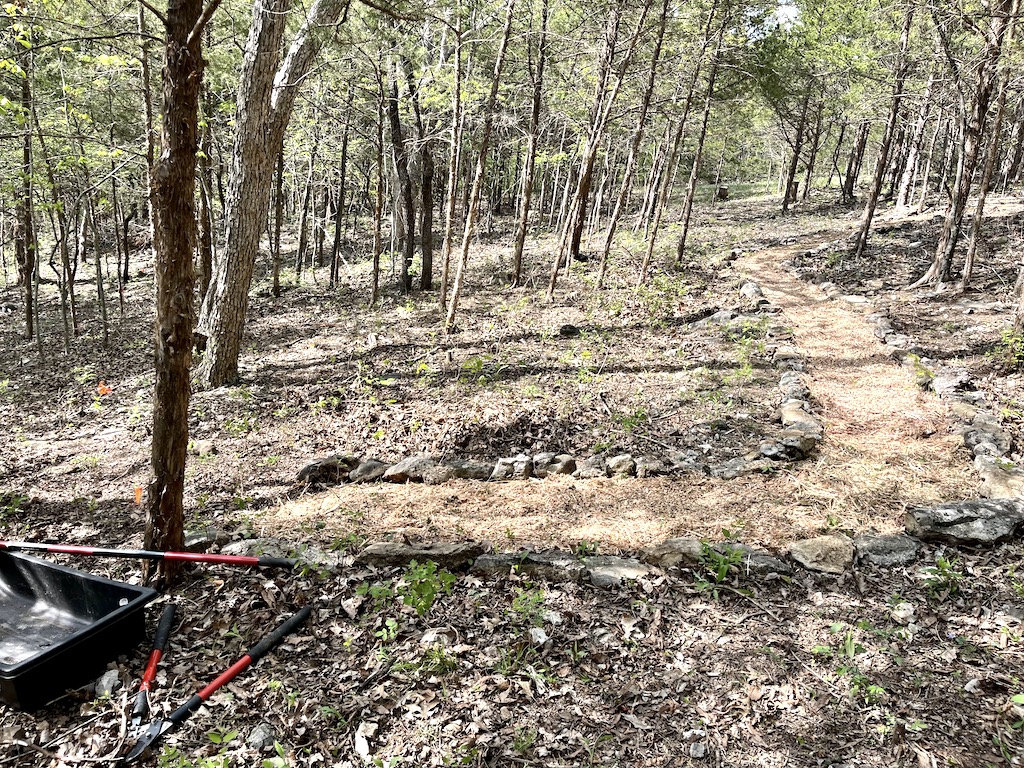
As I move down the hill larger rocks (to line the trail) are harder to find so I’m sledding them down the hill.
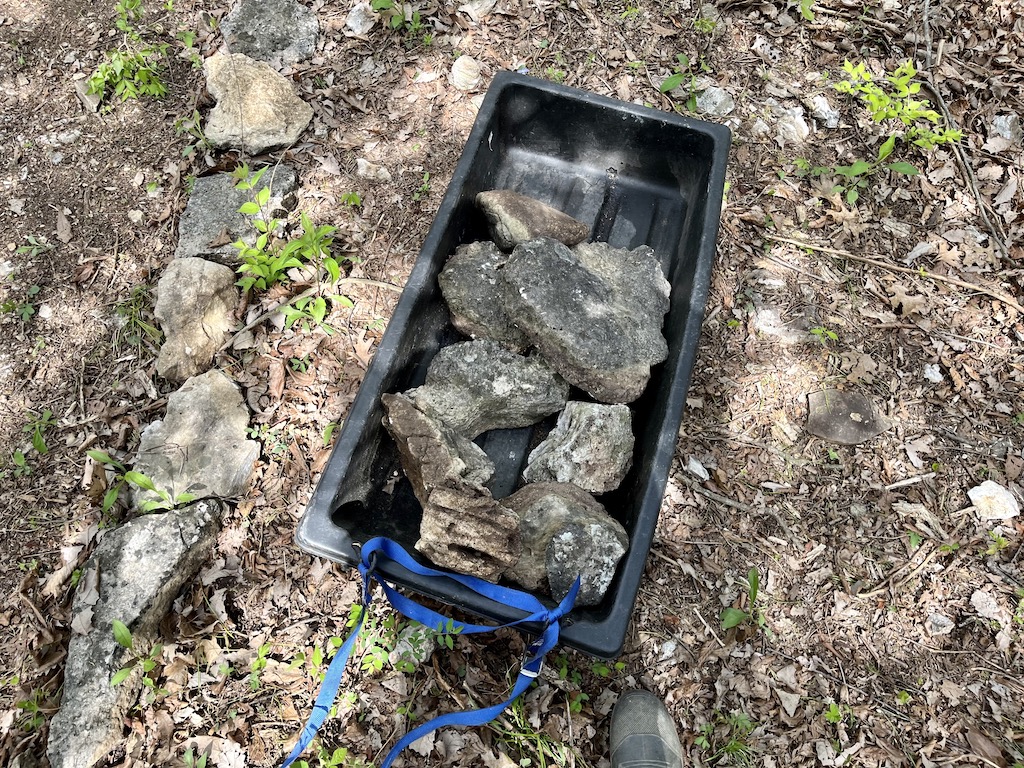
Hiking trail inching along
Stacking stones

There are a lot of articles on stacking stones. Why some people stack them… and at least as many on why you should not.
Because stone stacks are built using unaltered stones, they require your full attention on the task of the present moment to find the perfect connection of the stone’s centre of gravity to its foundation to balance the next layer. The process is meditative; it heightens present moment awareness/mindfulness. Even the simple act of choosing the stones heightens mindfulness!
I have no interest in balancing stones (the fad that seems to piss off conservationists everywhere). I just like making a little pile. I do find the process meditative.
A place to sit
I’ve been spending a good bit of time in the woods and find there’s no good place to sit when I need stop and catch my breath. At least not in our woods. I’m not ready to put a store-bought bench along my hiking trail but spotted some nice logs in my neighbors wood pile.
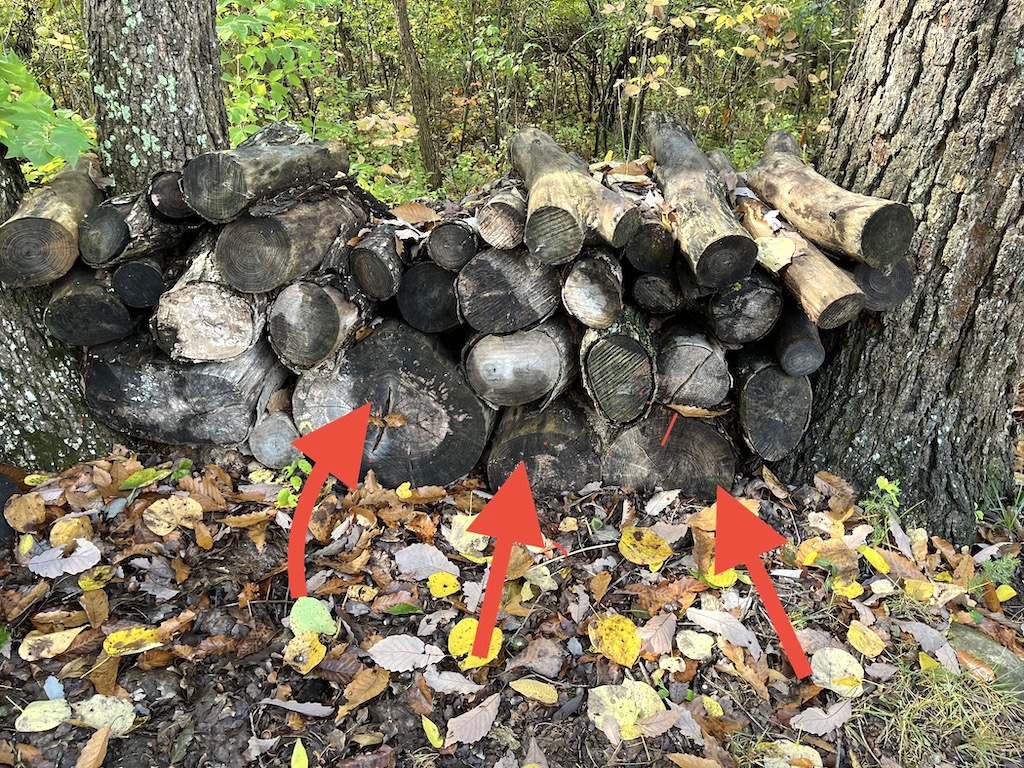
After unstacking –and restacking– his logs, I would up with several that will do nicely, once I flatten the top with my chainsaw.
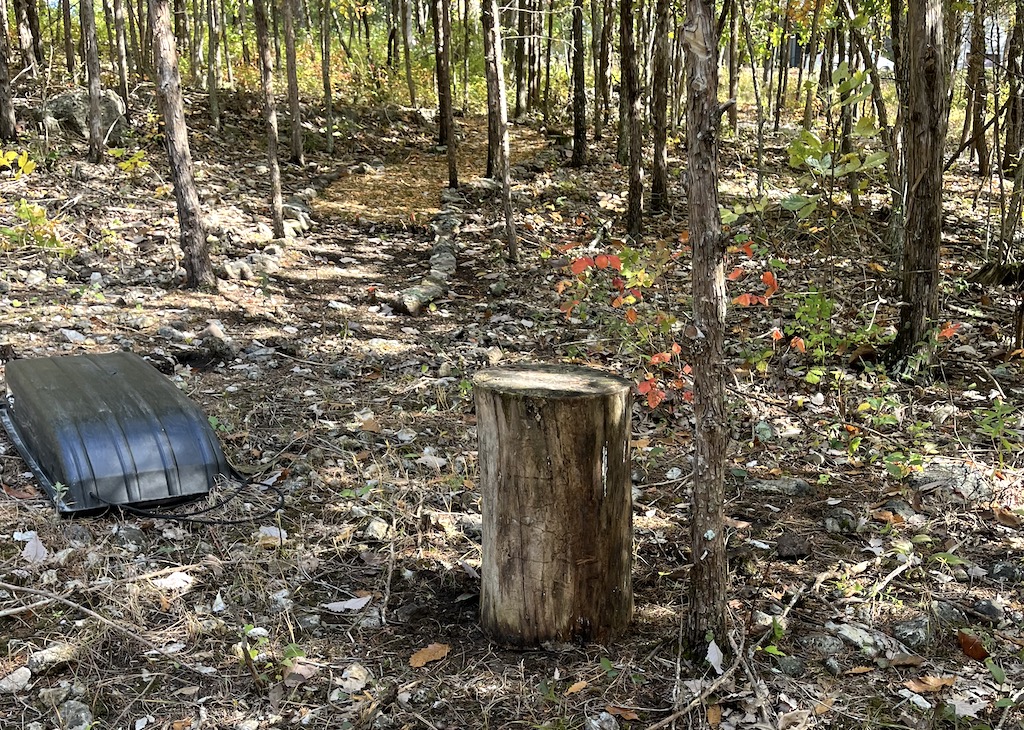
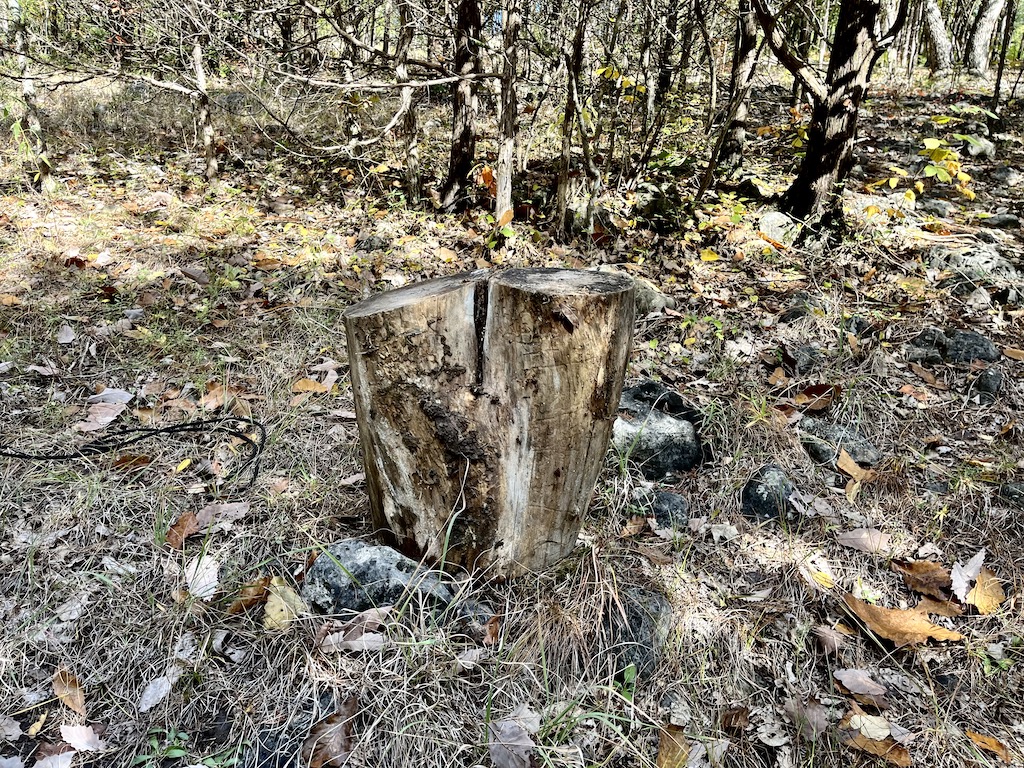
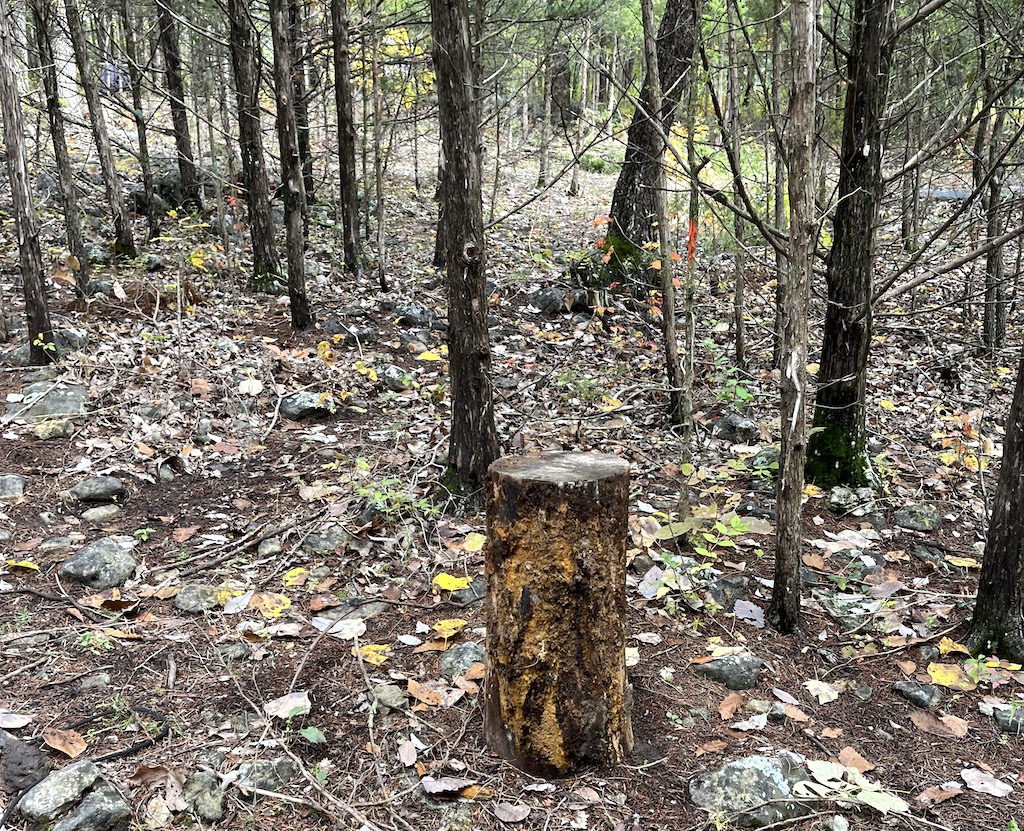
Moving big rocks with new winch
The 20 page owners manual (yes, I’m one of those people) for my WARN cordless winch recommended “practicing” with the winch before getting into a real use situation. I guess that means you can pick the terrain and the size and shape of the object to be moved/lifted.
For my practice session I decided to move a couple of big rocks and use them to protect our new well head from the sleepy garbage truck drivers who turn around in our cul-de-sac.
The winch only has 15 feet of cable, which makes sense given its speed and “use cycle” (two minutes of pulling has to be followed by 30 min of downtime to avoid over-heating). So that means extra straps and re-sets if you’re pulling any distance. I anchored the winch to my pickup.
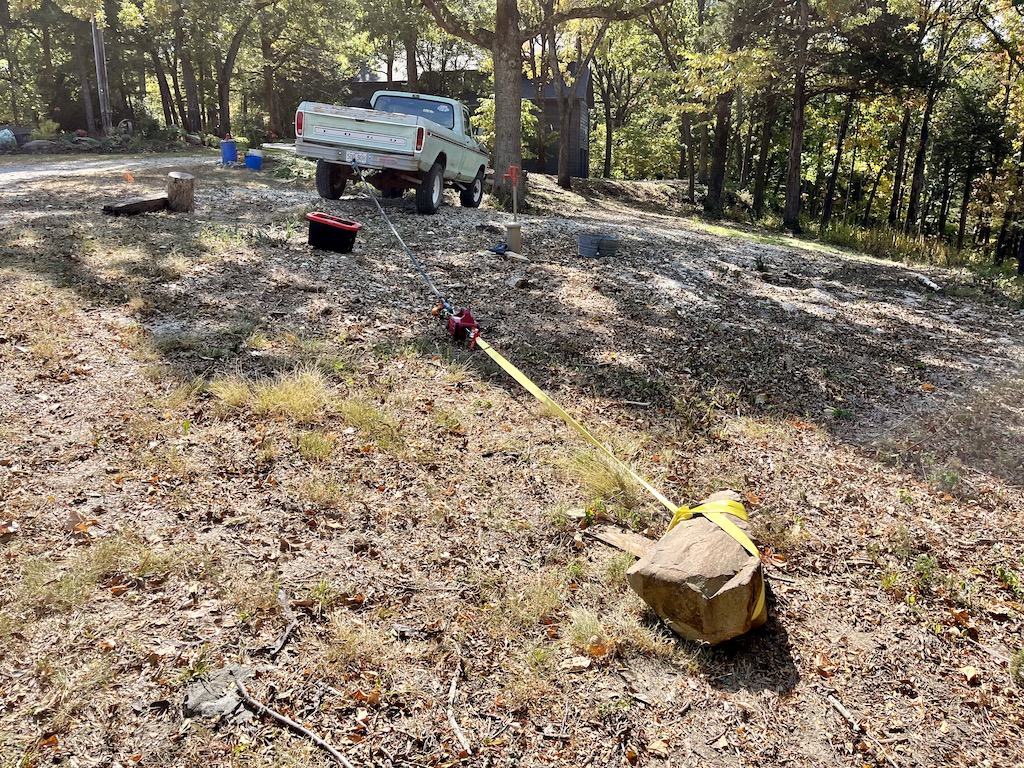
One of today’s first lessons was the importance of securing the strap. Took me a couple of tries.
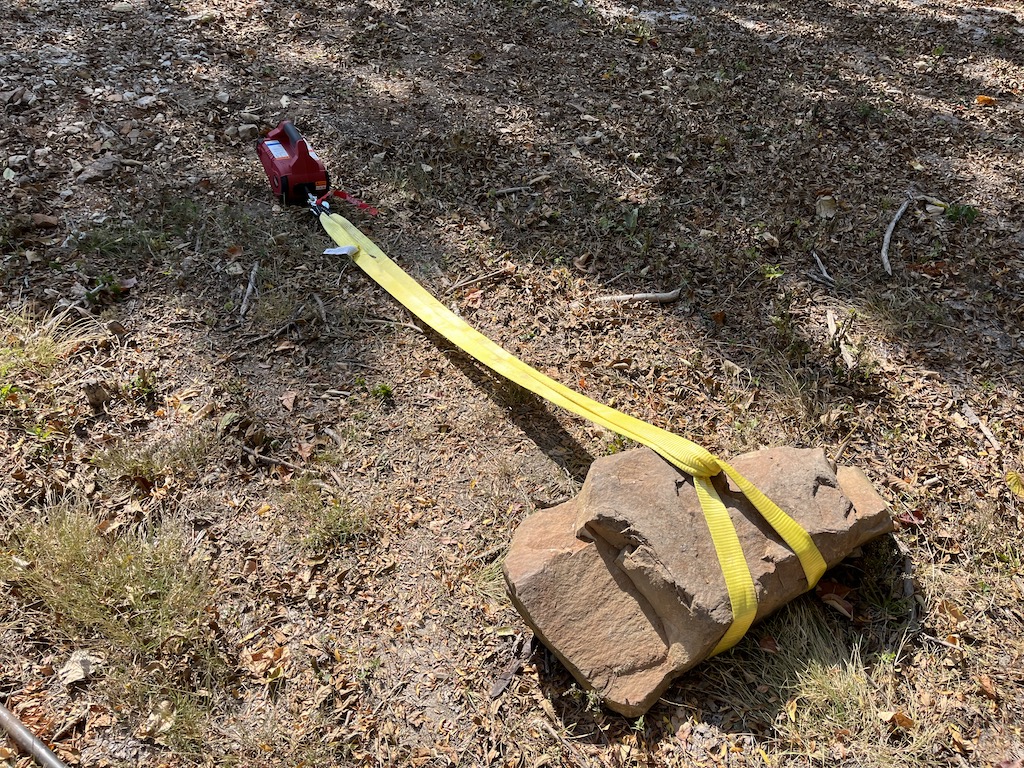
In the photo below you see my Bubba Rope towing rope and soft shackle. I bought these for the Land Rover and never used them for that purpose. Yet. The idea behind the soft shackle is in the unlikely event it breaks, you won’t get the shrapnel you’d get from a metal device. But my shackle won’t break.
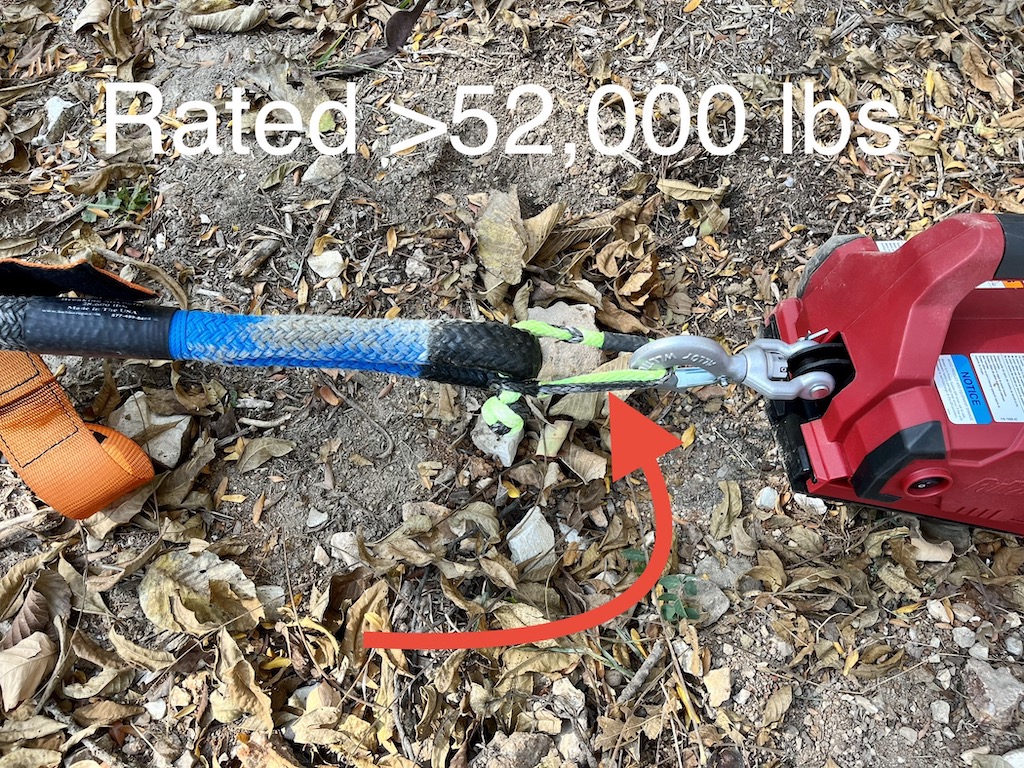
I tried moving a smaller rock using the sled but the weight was too much and I wound up using the strap on this as well.
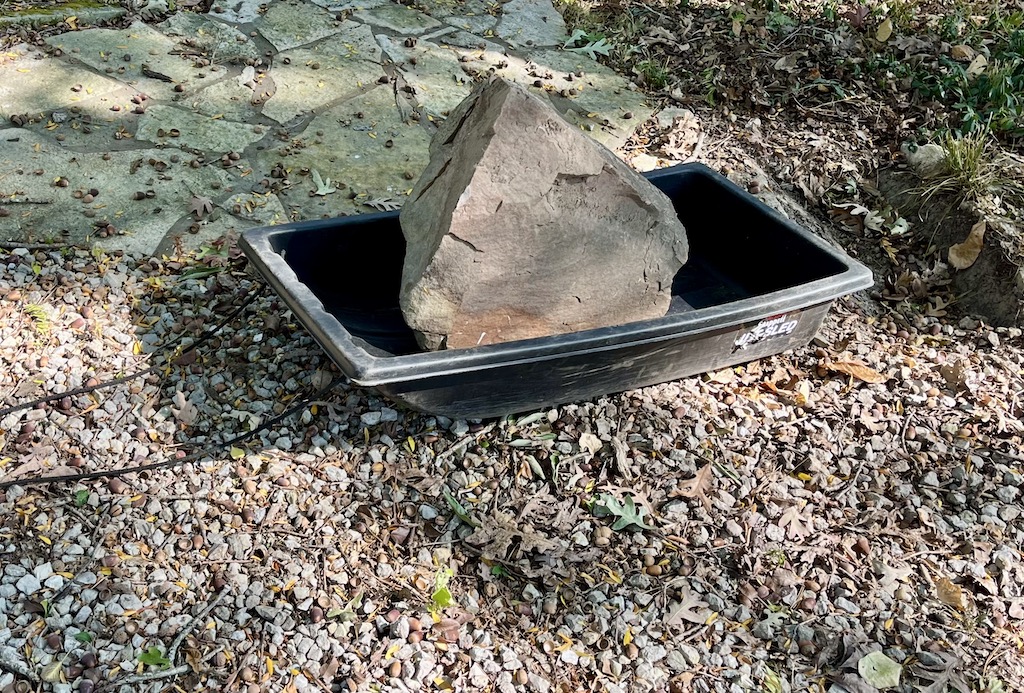
Will have to wait on a front-loader for the big rock. Too much for the winch (and winch operator). We’ll probably add some more camouflage around the well-head down the road.
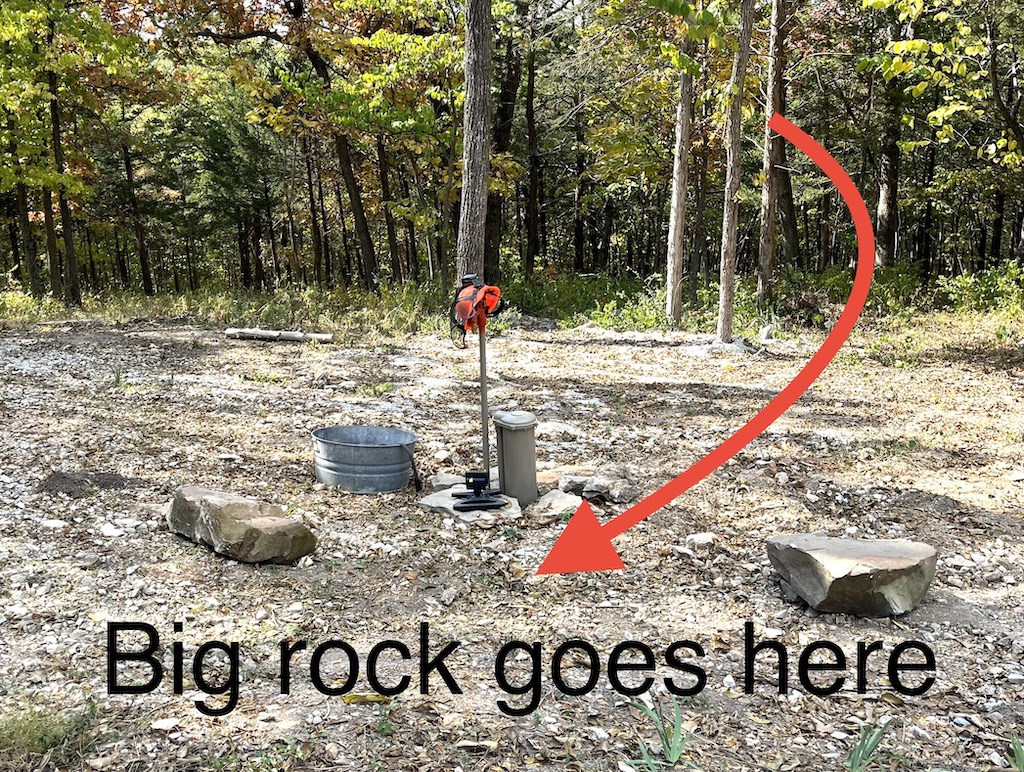
What did I learn today? For some chores it will be easier to hook a strap to the pickup (in 4 wheel drive). As for my intended use of pulling the wood chipper back up the hill, I expect I’ll do some manually rolling where the grade is not too steep, augmented by the winch.
Moving chipper down the hill
The idea is to get the chipper closer to the trees and brush that needs chipping, thereby reducing the amount of dragging, much of it uphill. When it gets cold I’ll have to put the chipper indoors. Depending how far down the hill I’m working getting it back up the hill with the winch will be much easier than my dragging it (maybe). At least that’s the theory.
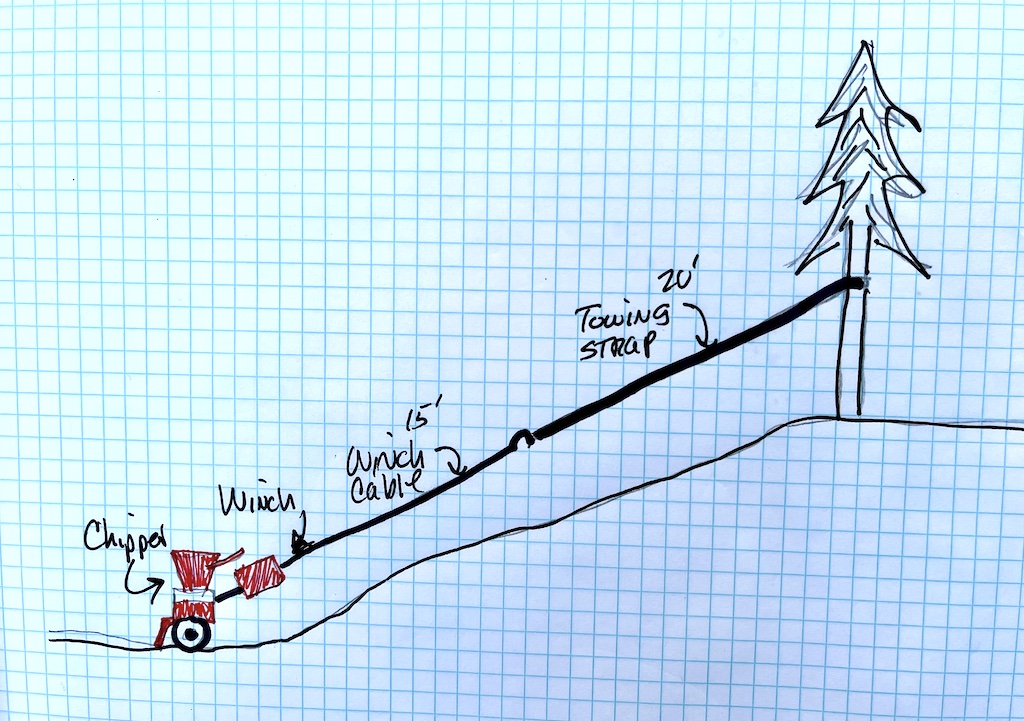
The winch has 15 feet of cable so coming up the hill will take some time. In the sketch above I have the winch attached to the chipper (as opposed to the tree) so I can control the speed and steady the chipper as it creeps up the incline..
Wood chipper on the move
If the trails project is going to proceed, I’ll have to move the wood chipper down the hill. It has wheels so downhill is no problem…but getting it back up the hill would be a problem. It’s a heavy mother. Hopefully I’ve solved the problem with a battery-powered winch.
How trail designers build good hikes
This 5 minute video looks at how trail designers (it never occurred to me there was such a thing) and engineers do what they do.
